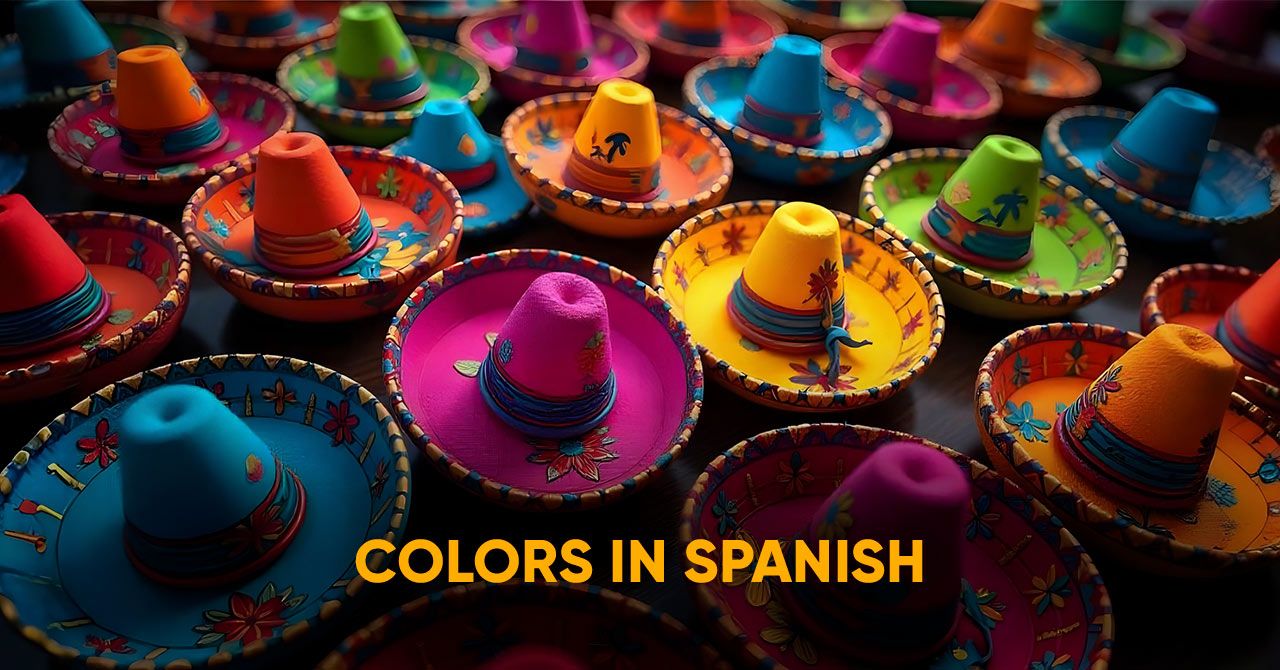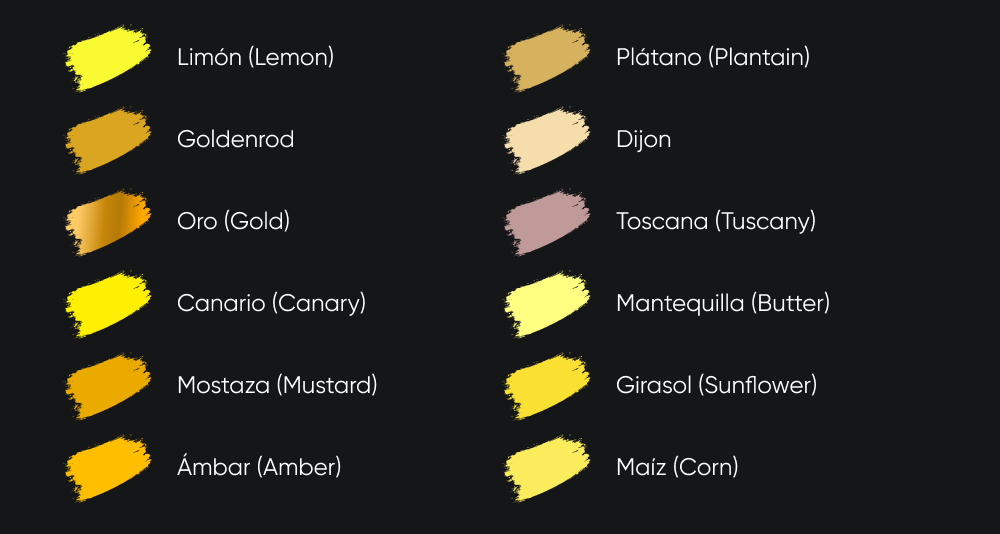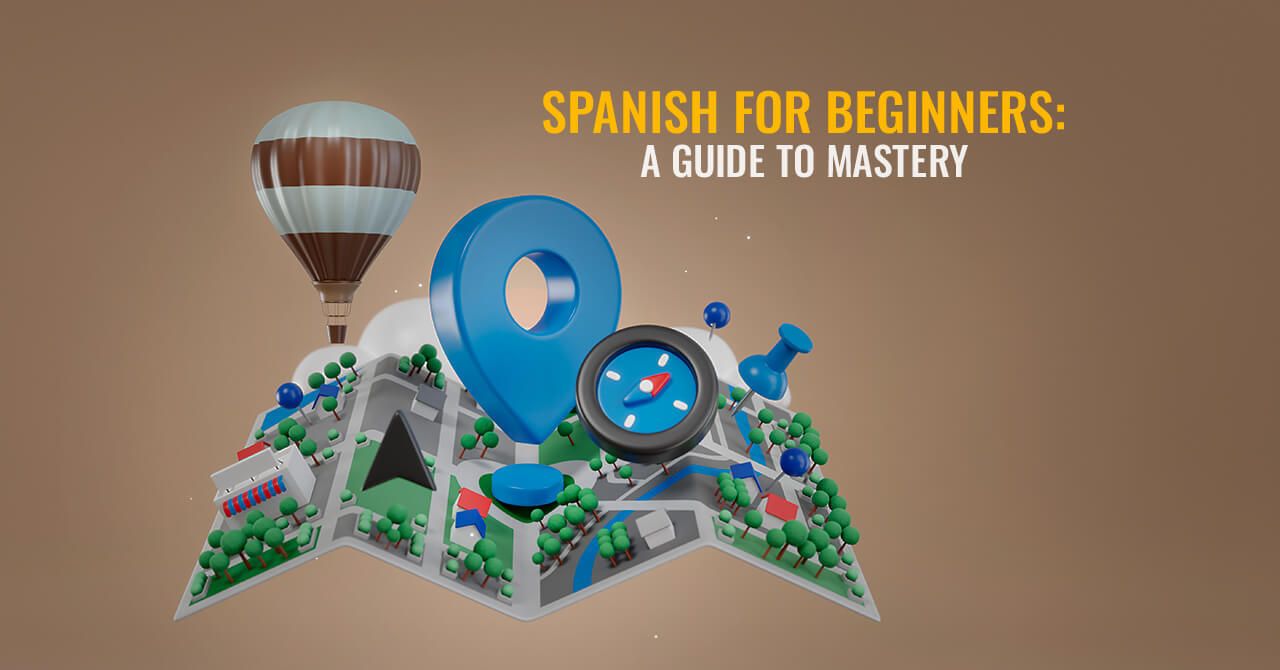
Colors in Spanish: Grammar Lessons-Curiosities for Colors and Shades
There is a large number of colors in Spanish. Moreover, depending on the gender or even the country, their name can change radically.
How do you say colors in Spanish? There is a great variety of colors in any language, and Spanish is no exception. There are shades and grades that we do not even know in our native languages.
This makes it difficult to memorize when learning the language. Therefore, in this article, we will present the vocabulary for colors in Spanish. We will also mention the most well-known shades. We will also give you some tips on how to memorize and learn them easily.
All colors in Spanish
Basic Spanish colors
The chromatic scale for all colors in Spanish is, in essence, identical to any other language. It is divided into color scales, each of which, in turn, is subdivided into “warm colors and cold colors.”

Our chromatic scale has different base colors and their respective variations. Here is a list of colors in Spanish that are the most common:
- Rojo = Red
- Azul = Blue
- Amarillo = Yellow
- Naranja = Orange
- Verde = Green
- Morado = Purple
- Rosa = Pink
Here are some examples:
Mi nuevo atuendo es todo verde.
My new outfit is all green.
Esa caja azul se ve bien.
That blue box looks nice.
There are also other basic Spanish colors. Although belonging to other achromatic scales, they are also considered colors. These are:

Here are some examples:
Me gustan los relojes dorados.
I like golden watches.
Mi alfombra está toda marrón.
My carpet is all brown.
It is worth noting that around 21 countries have Spanish as their native language. In addition, at least ten countries have made it their official secondary language or the second most widely spoken language in their territory. This reality also has an impact on some colors. As a consequence, we find variations of words related to colors.
The colors in Spanish that are pronounced differently depending on the country are:
- Morado (Purple). It can also be pronounced as “Violeta” (Violet) or “Púrpura” (Purple). “Morado” is more common in countries such as Spain, Mexico, Venezuela or Chile. “Violeta” is for Argentina, Uruguay, Paraguay and Peru. “Púrpura” is perhaps the least used version, but it is widely accepted in several Latin American countries.
- Rosa (Pink). The grammatically correct version of the color pink is “rosa.” However, in many countries, “rosado” (“pinky,” an adjective) has been turned into a noun. In Colombia, Uruguay, Venezuela, and Argentina, it is common to hear “rosado” instead of “rosa.”
- Naranja. A very similar situation also occurs with the color orange. In some countries, the adjective “anaranjado” (i.e., an object with orange tones, “orangish”) is converted as a noun. It is widely heard in Caribbean countries.
Here are some examples:
Tu cabello no parece rojo, es más como morado.
Your hair doesn’t look red; it’s more purple.
Bienvenidos a la Casa Rosada.
Welcome to the Pink House.
Adjectives for colors in Spanish
We have mentioned the color scale in Spanish is measured by tones. They vary between light/dark or warm/cool. But countless adjectives describe colors. Some of the most common ones are the following:
- Claro (light). Azul claro (light blue), verde claro (light green)
- Oscuro (dark). Rojo oscuro (dark red), gris oscuro (dark gray)
- Brillante (bright). Amarillo brillante (bright yellow), verde brillante (bright green)
- Pálido (pale). Rosa pálido (pale pink), amarillo pálido (pale yellow)
- Intenso (intense). Azul intenso (deep blue), rojo intenso (intense red)
- Suave (soft). Verde suave (soft green), rosa suave (soft pink)
- Chillón (vivid/garish). Naranja chillón (vivid orange), amarillo chillón (bright yellow)
Here are some examples of sentences with colored adjectives:
Me encanta el color de ese auto en rojo oscuro.
I love that car’s color, dark red.
Hoy el cielo está azul claro.
The sky today is light blue.
Names of colors in Spanish: color shades and tones
A common thing we find in Spanish is color shades. This is an additional description given to that color to provide some context.
Normally, we don’t just say, “That table is brown” or “I like that green car.” Sometimes, we, in Spanish, add more details in the colors, and that’s where shades come from.
Here are some of the most common shades in some colors:
What is the color yellow in Spanish, and its shades
It is one of the most varied shades because it often mixes colors such as yellow, gold, and certain shades of black. All these shades can be used to describe almost anything yellow. The most common shades are:

- Limón (Lemon). It is a very bright yellow, like the yellow of the fruit.
- Goldenrod. It is a shade imported from English that is widely used in the field of art. It is a dark shade, close to brown.
- Oro (Gold). It is a shade very similar to gold. It is usually a bit shiny and shimmering.
- Mostaza (Mustard). It is a dark shade of yellow. It is named after the mustard sauce.
- Canario (Canary). It is usually a bright shade. It’s named after the bird in Spanish.
- Ámbar (Amber). It is a shade of yellow with a certain closeness to red and orange.
- Plátano (Plantain). We give this name to yellow things with black spots (like bananas).
- Dijon. An uncommon French name to describe yellow with creamy tones.
- Toscana (Tuscany). It is a very opaque yellow that is often found in Baroque paintings.
- Mantequilla (Butter). It is a nickname for the yellow color, which is similar to the color of butter.
- Girasol (Sunflower). It is named after the sunflowers. It is usually a very light yellow.
- Maíz (Corn). It is also named after the corn. It is another version of bright yellow.
Here are some examples of sentences with colored adjectives:
Ese auto deportivo se ve muy bien en amarillo mortaza.
That sports car looks very nice in mustard yellow.
Compré una protector para mi celular amarillo girasol.
I bought a case in sunflower yellow for my mobile phone.
What is the color blue in Spanish, and its shades
In the case of blue, the shades tend to relate more to the colors of gemstones. These are some of the most commonly used shades:

- Cerúleo (Cerulean). A shade of dark blue that is often used to describe ceramics.
- Azulado (Bluish). Funnily enough, it is used to describe other colors that are not blue but have some blue in them.
- Cobalto (Cobalt). A very dark blue is often used to describe fabrics and paints.
- Zafiro (Sapphire). It is a vibrant, elegant, and somewhat shimmering blue.
- Índigo (Indigo). It is a more neutral shade that is normally used for interior design.
- Turquesa (Turquoise). A slightly greenish shade of blue. It is usually light in tone.
- Azul petróleo (Petrol blue). It is very dense and dark, and it is also used for interior design.
Here are some examples
Este papel blanco es algo azulado.
This paper is kind of bluish-white.
Me encanta ese azul índigo para mis paredes.
I love that blue indigo for my walls.
What is the color green in Spanish, and its shades
Shades of green usually indicate a certain closeness to colors in nature. Many of these words are used to describe plants. Here are some of them:

- Oliva (Olive). It comes from the olive tree. It is a neutral green that is very used in fashion.
- Salvia. A dull green is normally found in wall paints.
- Musgo (Moss). It is a very dark shade of green, and it may have some brownish tones.
- Jade. They are usually vibrant, light shades, like Asian gemstones.
- Bosque (Forest). It has to be a dense and dark green, like the jungles of the Amazon.
- Menta (Mint). It is a very pale and light shade of green.
Here are some examples
Me gusta el tono verde menta de mi té.
I like the mint green tone of my tea.
Tengo un sofá que es todo verde oliva.
I have a sofa that is all olive green.
What is the color red in Spanish, and its shades
In many cases, shades of red are often associated with stones. Some of them are as follows:

- Burdeos (Bordeaux). It is a very dark shade of red. In Spanish, it is often called by different names. For example: “vinotinto” or “rojo vino.” They all refer to the same thing.
- Granate (Garnet). It is another type of dark red color, like garnet rocks. This word is used to describe shades of hair.
- Carmesí (Crimson). It is a more opaque shade of red and is often used in lipstick colors.
- Escarlata (Scarlet). It has a strong and vibrant tone. It is often associated with passion in Spanish.
- Bermellón (Vermilion). It is a lighter shade. It is like the color of the vermilion bird.
- Carmín (Carmine). A dark shade of red is often used for paints.
- Rubí (Ruby). Same shade as the gemstone. Used for paints and hair colors.
Here are some examples
Burdeos es el color del vino.
Bordeaux is the color of wine.
Acabo de pintar mi cabello rojo carmesí.
I just painted my hair crimson red.
How to memorize all Spanish names for colors
Of course, the best way to learn colours in Spanish is by studying. To start, you can study grammar and consult content on the internet, such as this article.
These are our most recommended suggestions for learning all Spanish colors:
- Traditional methods. There are traditional resources for learning languages on your own, with flashcards, stickers, and Spanish manuals to learn the most basic rudiments of the language.
- Online content. Consuming content, videos, images, and reading articles that talk about the language are other common methods of learning colors in Spanish.
- Visual and plastic strategies. Using visual strategies, such as coloring, organizing cut-outs, or painting, helps a lot, from a mnemonic point of view, to learn all the names of colors in Spanish.
- Word Trainer. We have a tool called Word Trainer. It is software assisted by artificial intelligence. With this tool, you learn words and phrases by practicing them with a spaced repetition method. The LiveXP app reminds you when you need to practice a specific word. This ensures the most effective way of memorizing vocabulary. With Word Trainer, you learn not only the translations of new words but also their spelling, pronunciation, and use in context.
- Real-life conversations. In addition to the exercises, it is advisable to attend classes. At LiveXP, we have dozens of native speakers who are trained to help you with your next Spanish lesson. You can schedule sessions with the online Spanish teacher of your choice. You can talk to them about anything you like, from your hobbies to specific grammar topics. These lessons will last as long as you like, at a time that suits you. Together with your teacher, you can even develop strategies for memorizing colors.
Grammar aspects of using Spanish names for colors
As in any language, there are several aspects of grammar that we have to pay attention to when using names of colors in Spanish. However, this language has several special rules. Let’s look at the most common ones:
Gender agreement
In Spanish, adjectives must agree with the gender of the noun they describe. Colors that end in -o have masculine and feminine forms:
- Rojo (masculine): El coche es rojo (The car is red).
- Roja (feminine): La camisa es roja (The shirt is red).
For colors that end in -e or a consonant, the form stays the same regardless of the gender:
- Verde (green): El coche es verde. / La camisa es verde. (The car is green / The shirt is green).
- Gris (gray): El coche es gris. / La camisa es gris. (The car is grey / The shirt is grey).
However, colors derived from objects or materials, such as “naranja” (orange), “marrón” (brown), or “rosa” (pink), do not change in gender:
La casa es naranja.
The house is orange.
El sombrero es rosa.
The hat is pink.
Number agreement
Here, we have a little difference with English (because adjectives don’t change in English). Color adjectives must also agree with the number (singular or plural) of the noun:
- Rojo (singular): El coche es rojo (The car is red).
- Rojos (plural): Los coches son rojos (The cars are red).
- Roja (singular, feminine): La camisa es roja (The shirt is red).
- Rojas (plural, feminine): Las camisas son rojas (The shirts are red).
Similarly, colors that end in a consonant, such as gris or marrón, add -es for the plural:
- Gris (singular): El coche es gris (The car is grey).
- Grises (plural): Los coches son grises (The cars are grey).
- Marrón (singular): El pantalón es marrón (The part is brown).
- Marrones (plural): Los pantalones son marrones (The parts are brown).
Invariable color adjectives
Some color adjectives, especially those derived from objects or materials (like naranja, rosa, lila, vino), are considered invariable, meaning they do not change for gender or number:
Las paredes son naranja.
The walls are orange.
Los pantalones son rosa.
The pants are pink.
“Los colores” in Spanish: final words
As we can see, there is a large number of colors in Spanish. Moreover, depending on the gender or even the country, their name can change radically.
Therefore, it is important to memorize them all. There are many options for practicing colors in Spanish. As we have mentioned, in LiveXP, we have different tools and resources that can assist you. We even have the Word Trainer that will help you to complement your Spanish lessons.
The idea is that you memorize all these words and know how they behave in each context. Also, it is important for us that you understand how this widely used language behaves and things like colors (and their local variations) don’t present a problem in your Spanish studies.
I'm from Argentina and I'm bilingual. I speak both English and Spanish as native languages. I'm a content writer with extensive experience.

